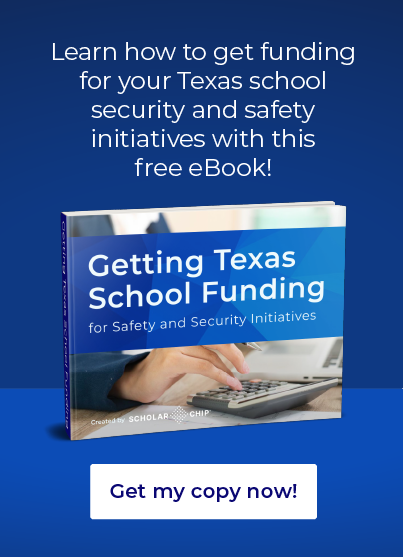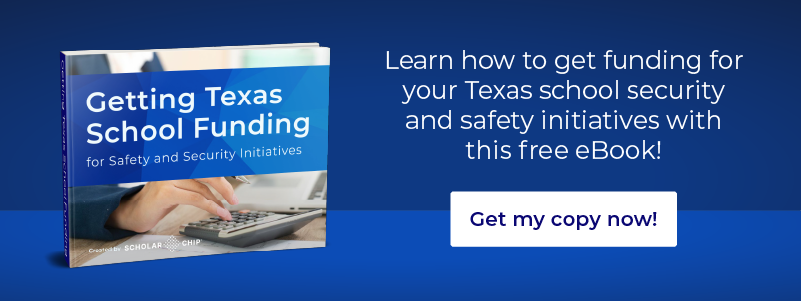Incidents of school violence draw intense media coverage and drive anxious parents and others in the community to board meetings, demanding tightened security to keep their children safe, such as armed guards and other building-hardening measures. Of course, resources are finite, and school leaders must consider the effectiveness of security hardware along with other safety measures to provide an umbrella of protection.
Districts have their own unique set of demographics, geography, and other factors, so there is no one-size-fits-all solution to the problem of violence in schools. A RAND Research study does note that developing a school safety plan is a universally effective action that school districts must take to secure their school communities: “Creating a comprehensive all-hazards school safety plan that is updated annually was consistently cited as a best practice.”
An all-hazards security plan expands on emergency response to address prevention and recovery. The speed at which technology advances means plans quickly become obsolete. Your Texas school safety plan must be revisited every year to remain relevant and effective, which is costly. However, state and federal legislators are keenly aware of the need to strengthen school security, and grants that may be used to offset these costs do regularly become available.
Sources of Funding
Texas Education Agency
Governor Abbot’s school safety initiative included $100 million in grant money for security upgrades. The deadline to apply for a 2019-2021 School Safety and Security Grant has passed, but each legislative session brings the potential of new grant opportunities. Before updating a Texas school safety plan, school leaders should visit the TEA website and search for new grants. Contact the office of your district’s state house and senate members to make your needs known and inquire about funding options.
US Department of Education
Federal legislators regularly introduce bills designed to boost school security. The most recent round of federal grant money focuses on prevention, climate transformation, and mental health services. Federal legislation often is bogged down in politics, but school leaders seeking funds to develop or update a school security plan can find information about current federal grants by visiting the TEA website.
US Department of Justice
The DOJ supports two programs aimed at improving school safety: Community Orientated Policing Services (COPS) and Student, Teachers, and Officers Preventing (STOP) School Violence. Both programs offer funding opportunities that may assist districts undergoing a safety plan update.
Texas School Safety Plan Requirements
Texas education code requires each district to develop a Multi-hazard Emergency Operations plan (EOP) that should address five phases of emergency management: prevention, mitigation, preparedness, response, and recovery.
Prevention
Controlling building access is the most common security measure implemented by public schools. Security cameras and mandated ID badges for personnel closely follow. The community often demands hardening measures such as ballistic glass, SROs or onsite marshals, metal detectors, etc. These additions create a less-welcoming environment and may negatively impact school climate. A school safety plan must assess the effectiveness of preventative measures and work to avoid a prison-like environment.
Mitigation
Even in a secured building, threats will arise. Safety plans should include measures to reduce these dangers. In 2004, the US Secret Service, drawing from its experience protecting government officials, offered school leaders guidance on matters of school safety. The effort produced the Threat Assessment in Schools guide, which recommends that schools create threat assessment teams to identify and manage potential dangers. Today, only about 42% of public schools report having these teams in place. Effective behavior management is an important piece that can mitigate or eliminate threats from within schools.
Response
A school safety plan must detail response procedures for possible events, including weather-related emergencies, fires, toxic spills and leaks, and widespread illnesses, as well as hostile intruders.
Preparedness
Training is the difference between a panic response and an orderly implementation of procedures. Texas school safety plans must include provisions for training staff on procedures, as well as regular drills, so during emergencies, students and staff will know how to act.
Recovery
Traumatic incidents can profoundly affect the psychological wellness of students and others in the school community. A comprehensive safety plan will include interventions to mitigate trauma. Once the immediate danger has passed and operations return to normal, school leaders need to analyze the event and with the aid of useful data, develop plans to prevent similar incidents.
A Modern Approach to School Security
IT infrastructure quickly becomes obsolete, and schools must continually upgrade SIS, attendance, and administration programs. The newest technologies can streamline operations and increase security with smart card IDs, remote access door controls, online visitor management, and automated student behavior programs. These high-tech security measures are minimally invasive and fit better into the school environment than obtrusive one, such as armed officers and metal detectors.
Systems to Better Secure Buildings
Smart card ID systems utilize RFID technology to record attendance and maintain a real-time record of who is in the building. Mobile capabilities make it possible to use these systems with extra-curricular activities, field trips, and buses. Visitor management integrated with SIS and law enforcement databases will red-flag those who pose a threat by requiring all visitors to scan their driver’s licenses or other state ID.
The most prevalent threat to student safety is bullying and fighting. Most of these incidents happen in unsupervised areas. An advanced secure door access system makes it possible to lock down restricted areas. Entrances may be accessed only by cardholders with preprogrammed permissions. The entire system may be controlled from an administration dashboard. A single door or all doors in a building may be locked with a single command, giving administrators a superior level of control.
Identifying and mitigating threats that arise from within requires an effective behavior management system. Automated behavior programs provide consistency in recording behaviors and issuing consequences such as referrals and detentions. Comprehensive systems include social-emotional learning components to teach students behavior norms and expectations. These systems provide data to help teachers, counselors, and administrators identify patterns of behavior that require intervention. These technology upgrades are a critical part of any school safety plan and an effective way to spend security funds.
A workable, regularly reviewed school security plan is vital to the safety of students and school personnel. Availability of funds often depends on the current political climate. School leaders can better compete for grant money by identifying the objectives of their school security plan and having a clear vision of desired security measures and their costs. Contact ScholarChip to learn how the latest technology can become a vital component of your Texas school safety plan.
ScholarChip offers a solution called Alternative Behavior Educator (ABE). This innovative program enables school administrators and counselors to identify, monitor, and improve student behavior throughout a student’s career, while giving them powerful data-driven reports that quickly flag at-risk students, help monitor and chronicle progress, and help them identify school safety risks before incidents.
To learn how ScholarChip can help make Texas schools safer or get free recommendations, feel free to chat with one of our specialists today!


